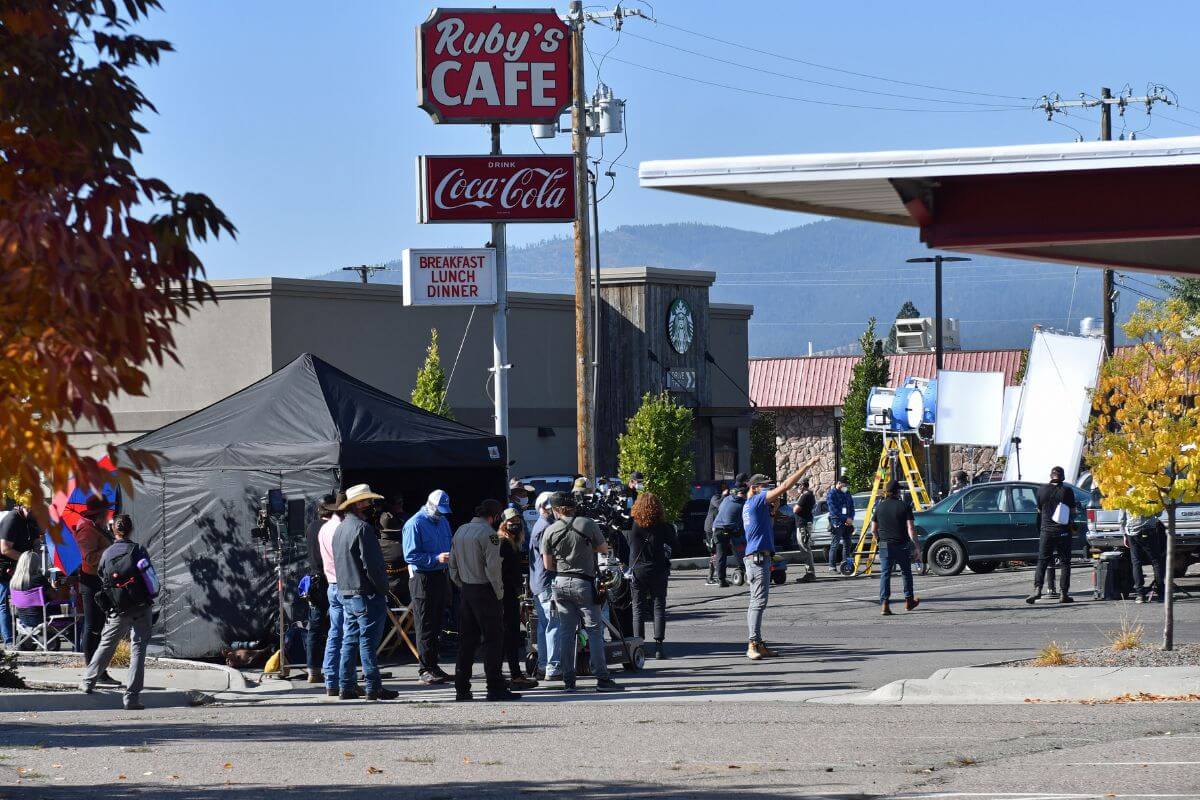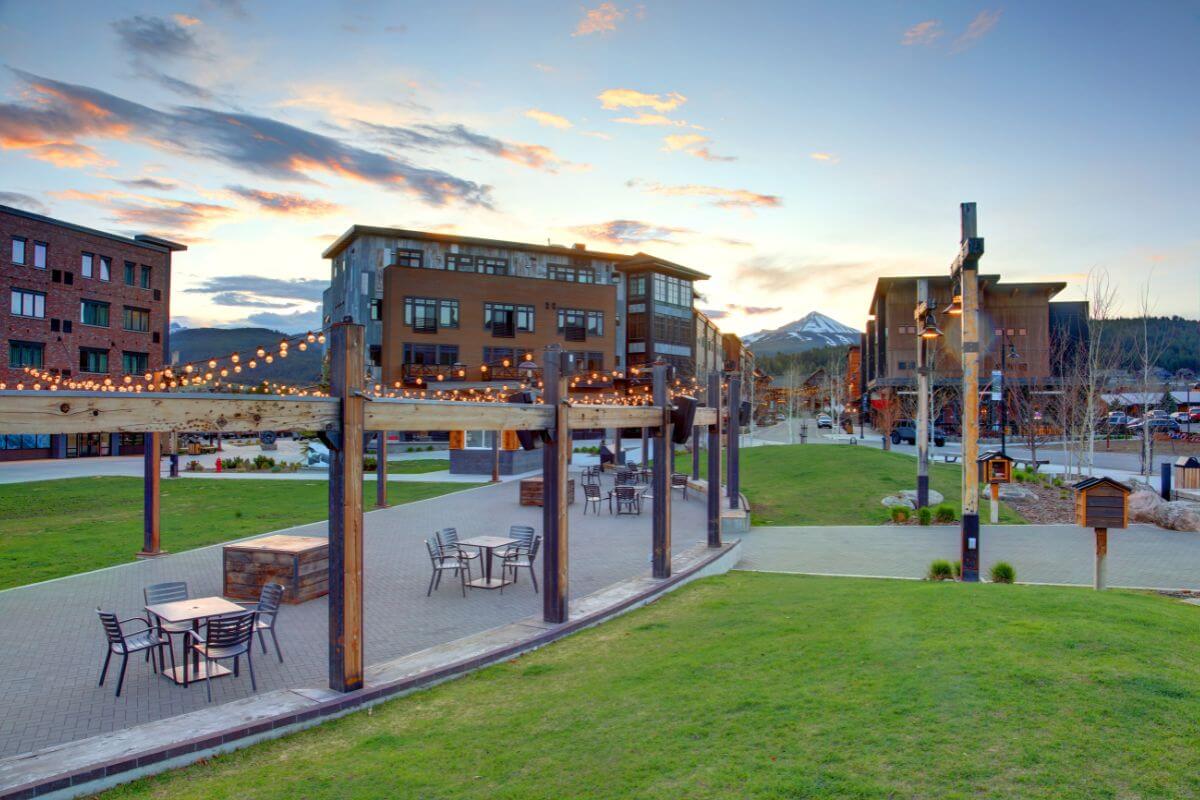Welcome, wanderers, to the breathtaking world of Montana.
It’s a land of jaw-dropping landscapes, untamed wilderness, and boundless adventures.
But there’s something else that’s been making waves in this rugged paradise: its booming real estate market.
In this article, we’ll unravel the mysteries behind Montana’s skyrocketing prices and the forces shaping its real estate landscape.
- Related article: What Is Montana Like
Whether you someday dream of making The Treasure State your home or are simply curious about its soaring prices, we’re here to provide comprehensive information.
Are you ready to dive into the world of Montana’s real estate market? Let the adventure begin!
Montana’s Cost of Living and Housing Market Inflation

Here’s a quick overview of Montana’s cost of living and the inflationary forces that have shaped its housing market in 2022.
| Year/Period | Montana’s Cost of Living Rank | Housing Price Increase (%) | Annual Housing Price Increase (%) |
| As of 2022 | 23rd | – | – |
| 2000s | – | More than doubled | – |
| 1990s – 2008 | – | Recognized trend | – |
| Post-2008 Recession | – | 4.1% | 4.1% |
As you dream of making Big Sky Country your home, keep in mind the complexities and realities of the cost of living and the inflationary pressures that have shaped its housing market.
Montana’s cost of living and housing market inflation are challenges that must be navigated with foresight and careful planning.
- Learn more about Montana Living Prices
Reasons Behind Montana’s Soaring Prices

From the recent ‘Yellowstone Boom’ in Montana, reminiscent of a similar past event, to the impact of COVID-19, a range of factors can be attributed to the increased prices in the state.
Let’s take a look at each of them.
1. Montana’s ‘Yellowstone’ Boom

With its captivating storyline filled with family intrigues, power plays, and plot twists, Yellowstone has become a sensation, gaining immense popularity across the U.S.
The show stars Hollywood A-list actor Kevin Costner, further adding to its appeal.
But what many may not realize is that it’s not just another show set in a fictional world. It’s filmed in the mesmerizing landscapes of Montana, part home to Yellowstone National Park.
This exposure has had a profound impact on Montana’s economy, as highlighted in a study by the University of Montana.
During the filming of Season 4, the production of Yellowstone contributed a staggering $72 million to Montana’s economy.
The show’s presence also provided an additional $85 million boost for local businesses, creating a thriving environment for entrepreneurship and growth.
The influence doesn’t stop there. Montana has been graced with free advertising, thanks to the portrayal of the fictional John Dutton and his ranch.
This exposure has led to a surge in demand for land and homes, particularly in regions like Bozeman, Missoula, and Kalispell.
In Bozeman, the median cost of single-family homes has skyrocketed from less than $500,000 to nearly $750,000, according to data from the Gallatin Association of Realtors.
This increase in property prices presents challenges for working professionals, as high rents make finding affordable housing a daunting task.
To make matters more complex, some landlords are choosing not to renew leases with tenants, exacerbating the housing affordability issue.
Montana’s ‘Yellowstone’ effect triggers memories of a previous culture clash depicted in the movie A River Runs Through It, which was also filmed in Montana.
This film’s portrayal of the state led to a surge in interest in fly fishing properties, contributing to the early ’90s growth of the fly fishing industry.
2. Montana’s Pandemic Influence

Like the rest of the world, the effects of the pandemic on Montana have been nothing short of transformative.
As the pandemic swept across the nation, it prompted remote work opportunities and concerns about densely populated areas.
The appeal of the state’s wide-open spaces, coupled with the allure of remote work, led to a significant influx of residents into the state.
In fact, Montana emerged as one of the fastest-growing locations in the nation in 2021, according to the U.S. Census Bureau.
The state’s population surpassed 1.1 million people, experiencing a 9.6% growth from 2010 to 2020.
Considering that it’s the 8th smallest state by population, this is a significant shift.
What’s even more fascinating is the motivation behind this population surge.
The COVID-19 pandemic prompted people with ties to Montana, such as those with family connections or who grew up there, to move back to the state.
And with remote work opportunities becoming the new norm, people were no longer confined to the city where their job was located.
They could now choose to relocate to places with personal connections and more space.
With its breathtaking landscapes and outdoor recreational opportunities, The Treasure State quickly became an attractive destination.
As the population grew, so did the demand for housing and land in Montana. Homes for sale were snatched up quickly, as more and more people sought to set up residence there.
3. Montana’s Economic Growth and Conservation Appeal

In Montana, the tensions between long-standing residents and newcomers have become quite noticeable.
It’s a story of cultural differences and contrasting viewpoints that have unfolded within the state.
Some longtime residents voice their concerns about newcomers who are buying property without fully integrating into and committing to their communities.
The change in neighborhood dynamics is palpable, with neighbors being known but not necessarily considered friends.
In Bozeman, complaints have arisen regarding the changes in the city.
An influx of individuals perceived as “highfalutin people” with posh attire has left some locals feeling uncomfortable.
Downtown areas too have undergone transformations, becoming busier and more expensive.
- Learn more about Montana’s Affordability
Missoula and Kalispell have seen similar shifts, where longtime residents perceive newcomers as being rushed and demanding.
It’s intriguing to witness the rapid growth in the state’s economy amid all this.
Its land market continues to be stable despite the economic turmoil, attracting individuals who arrive with financial resources and entrepreneurial ambitions.
Governor Greg Gianforte’s office highlights that Montana’s economy experienced a remarkable 6.7% increase in 2021, marking its fastest pace in over 40 years.
This ranks it as the 7th fastest-growing state economy in the U.S., a testament to its allure and ability to draw in individuals who see its potential for both personal and economic prosperity.
4. Montana’s Supply and Demand Imbalance

Montana’s real estate market is currently experiencing a supply and demand imbalance that has made it increasingly difficult for individuals to find available properties.
One of the key factors contributing to this is the strict local building regulations that exist in many areas of the state.
Impact fees and density restrictions have driven up building costs, making it less feasible for developers to create new housing options.
As a result, the availability of properties has decreased, exacerbating the housing shortage.
Another factor that limits Montana’s housing supply is the considerable portion of the state’s land that cannot be developed because it is either a wetland, agricultural land, or federal land.
On the other side of the equation, there is a heightened demand for properties in the state.
Its natural beauty, outdoor recreational opportunities, and desirable quality of life have attracted an influx of people, especially during the pandemic-driven migration.
This increased demand puts additional pressure on the already limited supply of housing.
As a result of this supply-demand imbalance, Montana’s median home price has skyrocketed.
5. Montana’s Designation as a Top Relocation Destination

In the past decade, and particularly since the start of the pandemic, Big Sky Country has been discovered and embraced by a wave of newcomers.
As a result, Montana claimed the coveted top spot for inbound moves, surpassing outbound ones, according to a report by State to State Migration.
A recent report by the Bureau of Research and Economic Development at the University of Montana emphasized the tight housing market across the state, especially in cities like Missoula and Bozeman.
Gallatin County’s median sales prices soared by a staggering 45.1%, from $560,000 to $812,750.
This dramatic rise can be attributed to high demand, resulting in homes spending an average of just 41 days on the market, reflecting a 34% decrease from 2021.
Homes in Missoula County had the quickest selling time, whereas homes in Flathead County had the lengthiest time on the market before being sold.
This influx of new residents has transformed cities like Bozeman, Billings, and Missoula from small mountain towns into bustling hubs filled with diversity and opportunity.
But the remarkable growth doesn’t stop there.
In 2021, Montana witnessed the highest net inflow of moves per capita, with inbound moves accounting for a staggering 73%, while outbound moves trailed behind at only 23%.
Billings emerged as the top destination, boasting a remarkable 3.9 to 1 inbound-to-outbound ratio, followed closely by Missoula, as reported by NBC Montana.
Montana’s Real Estate Boom: How Is It Affecting the Rest of the Local Economy?

We understand how Montana’s real estate boom is impacting its big cities, but how is it affecting the rest of the local economy?
Here’s how:
- Inflated Housing Prices – Montana’s housing boom or housing crisis, as others would put it, particularly in towns like Bozeman, has led to significantly inflated housing prices, making it much more expensive to purchase a home.
- Rising Cost of Living – In areas where housing prices have skyrocketed, such as Bozeman, the overall cost of living has surged as well. The cost of living in Bozeman is now 20% higher than the national average.
- Ripple Effect – The increased housing costs have set off a ripple effect throughout the local economy. This effect is leading to higher costs for various goods and services beyond housing.
- More Expensive General Goods and Services – The inflated housing prices have contributed to a general increase in the cost of goods and services in the local area. As housing costs rise, businesses may adjust their prices to keep up, affecting consumers’ expenses for everyday items.
- Pricier Groceries – Montana’s housing boom has driven up grocery prices, making the state more expensive for food shopping. Groceries in Montana now cost 4.6% more than the national average.
- Comparison with Other States – The overall cost of living, including grocery expenses, has risen significantly in Montana compared to other states in the country. This price increase can affect residents’ budgeting and purchasing decisions.
- Economic Impact – The housing boom’s impact on the local economy is not limited to housing costs alone; it has broader economic implications that affect consumers’ wallets and the overall affordability of living in the state.
Why Is Montana Booming Final Thoughts

Montana’s real estate boom and soaring prices are primarily driven by increased demand and reduced supply.
This surge can be attributed to the state’s recent ‘Yellowstone’ boom, recognition as a prime relocation destination, and pandemic influence—all of which contribute to the increased number of inbound moves to the state.
However, it’s important to note that the high housing prices have had far-reaching consequences beyond the real estate sector.
The Treasure State’s cost of living now surpasses the national average, placing a strain on residents’ budgets and impacting the affordability of goods and services, among others.
Despite these challenges, individuals considering a move to Montana should not be discouraged.
With careful planning and budgeting, they can still enjoy the benefits of living in this vibrant state.
Why Is Montana Booming FAQs
1. Why Are So Many People Moving to Montana?
There are numerous reasons why people are choosing to relocate to Montana, with some of the primary ones being:
- Montana’s natural beauty
- Montana’s relatively low property taxes
- Montana’s zero sales tax
2. Why Is Montana Getting So Expensive?
Montana’s soaring prices can be attributed to its booming property market.
Housing prices in the state have more than doubled since 2000 across some Montana counties, with market inflation starting in the 1990s and worsening in the 2000s.
This rapid increase in house prices has made Montana increasingly expensive, causing concerns for residents and potential homebuyers.
3. Is Montana Real Estate Booming?
Yes, Montana’s real estate market is booming.
This can be attributed to a supply and demand imbalance, resulting in a higher average price for properties throughout the state.
Furthermore, the state’s remarkable economic growth is complemented by its breathtaking scenic landscapes, creating an attractive market that fuels the demand for property.
4. Where Do the Rich Live in Montana?
In Montana, the richest community can be found in the picturesque Helena Valley Northeast.
According to data from 2023, the median household income in this area reached an impressive $122,804, reflecting a thriving economy.
Additionally, the poverty rate in Helena Valley Northeast was remarkably low at just 3.06%, indicating a strong financial foundation for its residents.
5. Is Montana or Texas More Expensive?
That depends. While Montana’s cost of living is still relatively affordable compared to the national average, it is generally more expensive than Texas.
Essentials such as groceries, healthcare, and housing tend to cost more in Montana.
However, Montana does boast a lower median sale price for homes compared to Texas, making it a more affordable option for those in search of real estate.
Discover more of Montana’s offerings for your curious minds with these captivating reads:
- https://www.census.gov/quickfacts/fact/table/MT/PST045222
- https://www.nps.gov/yell/index.htm
- https://www.census.gov/quickfacts/fact/table/bozemancitymontana/PST045222
- https://lmi.mt.gov/_docs/Publications/EAG-Articles/0919-MigrationInMT.pdf
- https://lmi.mt.gov/_docs/Publications/EAG-Articles/1019-MT-Housing-Market.pdf
- https://commons.wikimedia.org/wiki/File:Yellowstone_film_set

